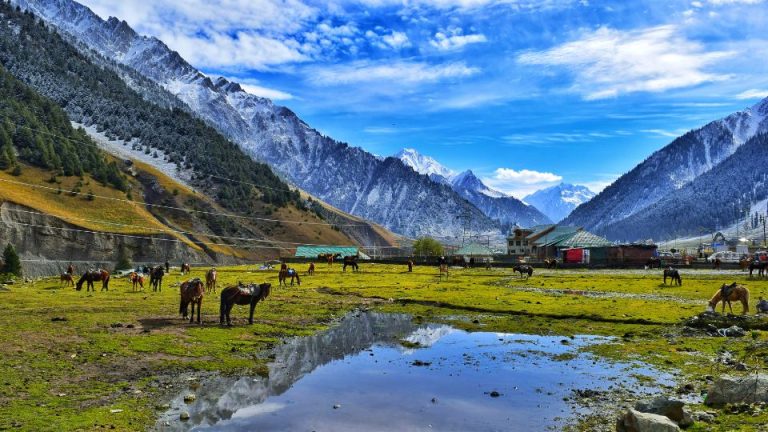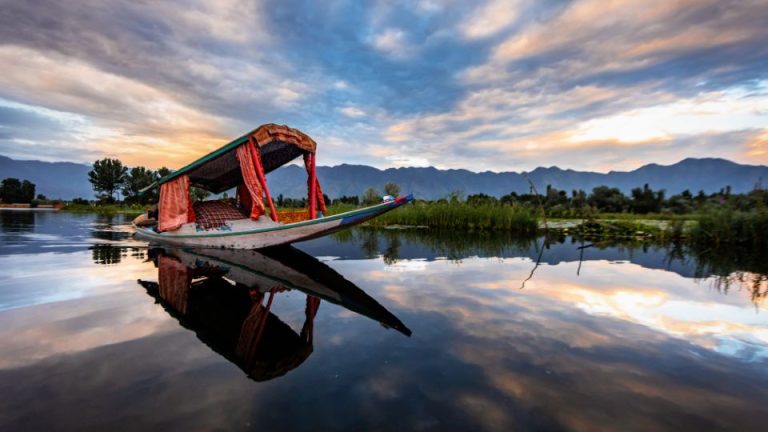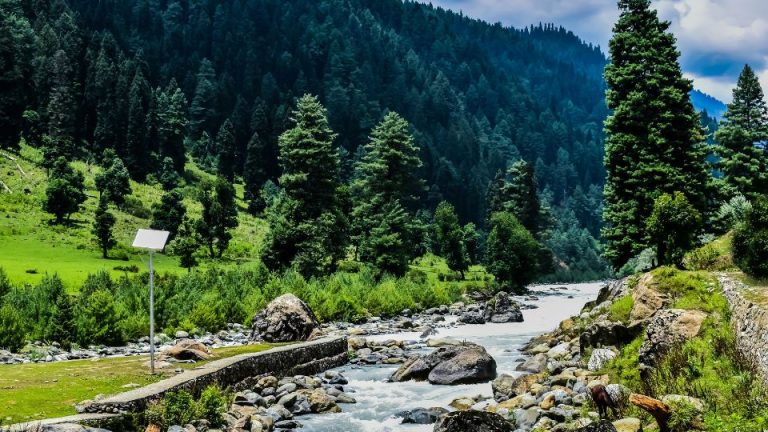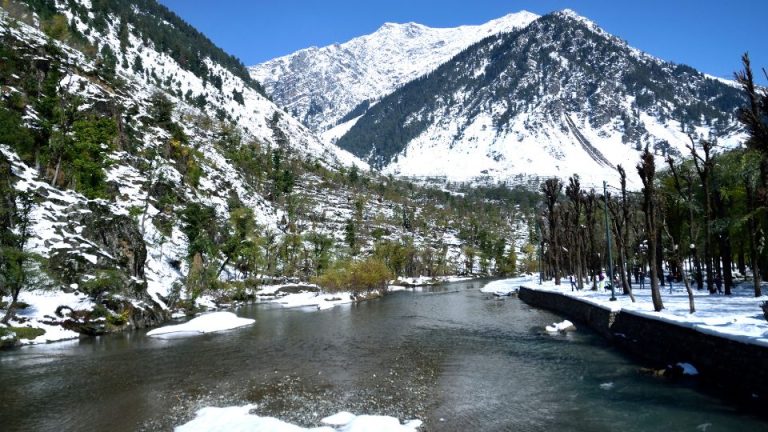1. A Land Steeped in History and Culture
Jammu & Kashmir is not just about natural beauty—it’s also a land of legends, traditions, and timeless heritage. The region has been shaped by centuries of Mughal, Buddhist, and Hindu influences, leaving behind architectural marvels, shrines, and vibrant festivals.
Shankaracharya Temple (Srinagar):
Perched atop a hill, this ancient Hindu temple dedicated to Lord Shiva offers sweeping views of Srinagar and Dal Lake. It’s both a spiritual site and a vantage point to soak in the valley’s beauty.
Hazratbal Shrine (Srinagar):
A revered Muslim shrine located on the banks of Dal Lake, Hazratbal is known for its pristine white marble structure and deep spiritual significance.
Vaishno Devi Temple (Jammu):
One of the most visited pilgrimage sites in India, Vaishno Devi attracts millions of devotees each year. The trek up to the shrine is as much about faith as it is about experiencing the breathtaking Trikuta Hills.
2. Scenic Beauty Beyond Imagination
The landscapes of Jammu & Kashmir change dramatically with the seasons, offering something new each time you visit.
Dal Lake (Srinagar):
The heart of Kashmir, Dal Lake is famous for its shikara rides and houseboats. Early morning boat rides with floating markets are a photographer’s dream.
Gulmarg:
Known as the “Meadow of Flowers,” Gulmarg transforms into a skiing paradise in winter and a lush green retreat in summer. The Gulmarg Gondola is one of the highest cable cars in the world, offering jaw-dropping Himalayan views.
Pahalgam:
With gurgling rivers, pine forests, and sprawling meadows, Pahalgam is perfect for trekking, river rafting, and quiet picnics. It’s also the base camp for the famous Amarnath Yatra.
Sonamarg:
Translating to “Meadow of Gold,” Sonamarg is known for its glaciers and pristine alpine meadows. It’s also the gateway to high-altitude treks.
3. Adventure at Every Turn
For thrill-seekers, Jammu & Kashmir is a playground of possibilities.
Trekking: Routes like the Great Lakes Trek and Tarsar Marsar Trek offer surreal views of alpine lakes.
Skiing: Gulmarg is one of Asia’s top skiing destinations.
River Rafting: The Lidder River in Pahalgam is perfect for adrenaline-packed rafting.
Road Trips: Drives through Zoji La and Leh-Ladakh are once-in-a-lifetime adventures.
4. Culinary Treasures to Indulge In
Kashmiri cuisine is an experience in itself, blending Persian, Mughal, and Central Asian influences.
Rogan Josh: Aromatic lamb curry with rich spices.
Yakhni: Yogurt-based curry that’s both tangy and comforting.
Dum Aloo: A Kashmiri favorite made with baby potatoes in a spicy gravy.
Kahwa Tea: A saffron-infused green tea with almonds—perfect for cold evenings.
Wazwan Feast: A traditional multi-course meal that reflects Kashmiri hospitality.
5. Warm Hospitality and Unique Stays
What sets Jammu & Kashmir apart is not just its beauty, but its people. Known for their warmth and hospitality, the locals make you feel right at home. Staying in a traditional houseboat on Dal Lake or a cozy homestay in Pahalgam adds an extra charm to your trip.
6. Best Time to Visit
Spring (March–May): Blooming tulips and pleasant weather.
Summer (June–August): Ideal for sightseeing and escaping the plains’ heat.
Autumn (September–November): Golden chinar leaves cover the valley.
Winter (December–February): Snowfall, skiing, and cozy getaways.
Final Thoughts: Why Kashmir Should Be Your Next Trip
From its snow-draped peaks and tranquil lakes to its rich history and warm people, Jammu & Kashmir offers a blend of experiences few destinations can match. Whether you’re watching the sunset on Dal Lake, skiing in Gulmarg, trekking to alpine lakes, or savoring a traditional wazwan meal, every moment here feels timeless.
So, are you ready to explore paradise on earth? Pack your bags, book your tickets, and let Jammu & Kashmir show you magic like nowhere else.
Insider Tip: If you want fewer crowds, plan your trip during spring or autumn—when the valley is at its most colorful and peaceful.




